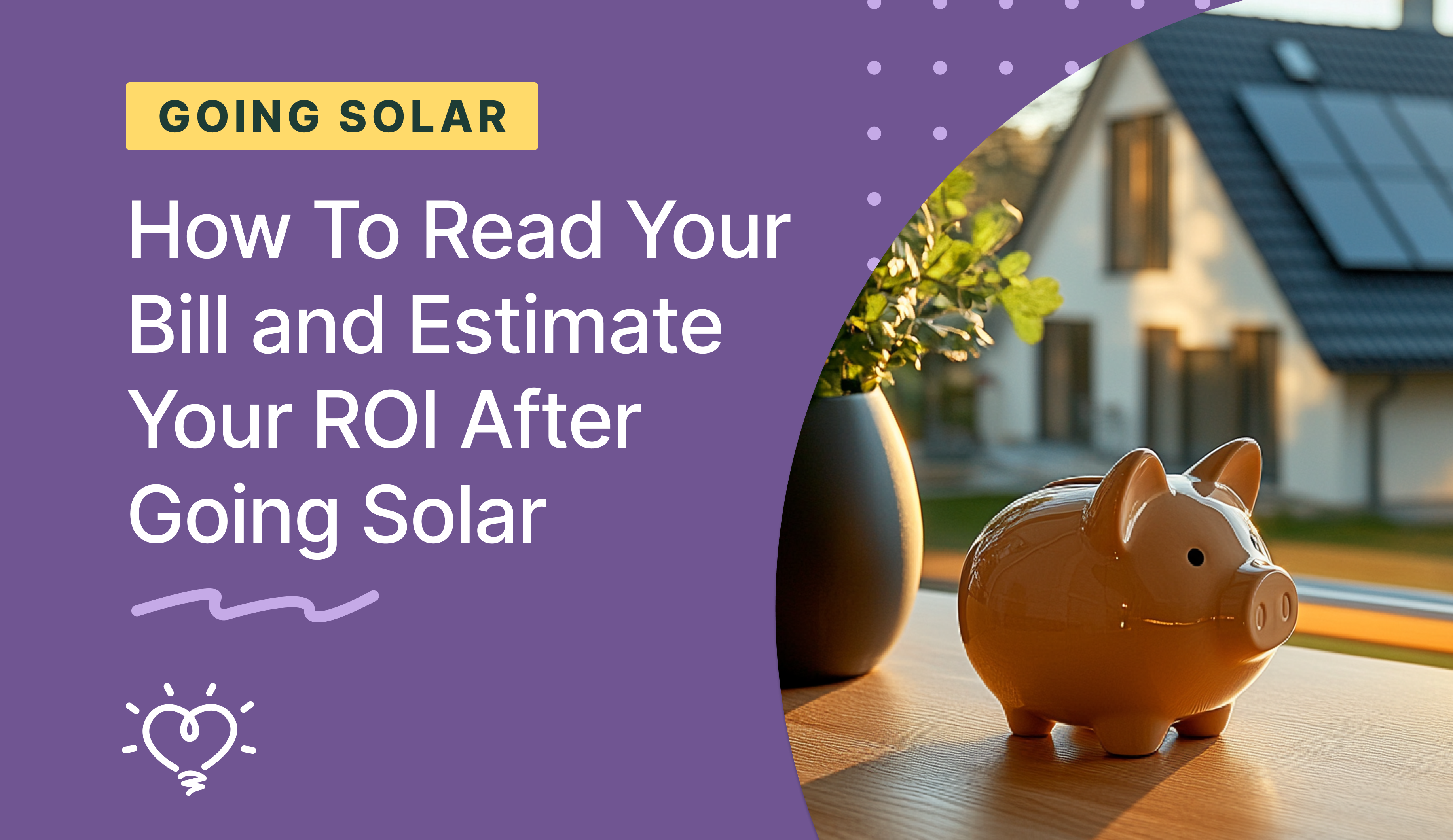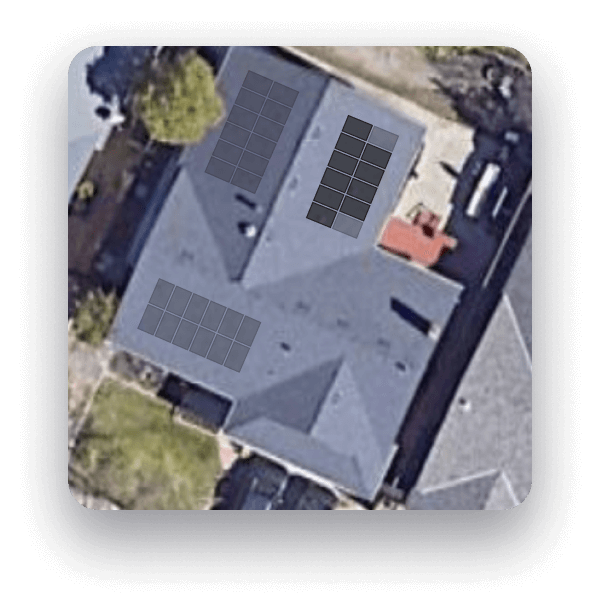Switching to solar energy offers homeowners an excellent opportunity to reduce their reliance on traditional utilities and save money on their electricity bills. However, there are still common misconceptions about what happens to your utility bill after going solar. Some people believe they will no longer receive a bill at all or that they will be entirely shielded from rising utility rates.
In this blog, we’ll address these misconceptions, explain how utility billing works with solar, and explore the key factors that impact your utility costs before and after installation. We’ll also cover essential tips for tracking your energy usage and maximizing your return on investment with solar energy.

Common Misconceptions about billing
Two of the most common misconceptions homeowners have about billing is whether or not they will have one after installing solar and that they will be completely immune to utility rate increases during the lifetime of their solar systems.
1. That you will no longer have a utility bill at all
Unless you go completely off-grid, you will still be connected to your local electricity grid and therefore will receive a monthly utility bill. This is a very small amount of money, so while you still will owe your electricity company a bit of money each month, it will be considerably less after going solar.
2. That energy consumption won’t change after going solar
One mistake homeowners make after going solar is assuming that their energy consumption will remain the same year after year. While it’s true that most solar systems produce more energy than is necessary to fully power one’s home, most solar designs are based on the previous 12 months consumption. So, if you think that you used considerably less energy in the past year than what you normally do, it might be worth planning for a slightly larger solar system.

Factors that impact your yearly utility spend
The amount of money you pay monthly to your utility bill depends on a few different factors, including the state where you reside, your energy needs and seasonality.
1. U.S. location
For context, some states have lower than average utility rates, while others–like California–are experiencing pretty high price hikes. As reported by Forbes, states of Hawaii and Alaska have the highest monthly utility bills while Utah and New Mexico have the lowest.
2. Energy use
How much–or how little–energy your home runs on has a lot to do with how many people are living in the home, how large the home is, and whether or not your home is energy efficient. For example, home builds are sometimes designed with energy efficiency in mind.
3. Seasonality
If you live in an area of the U.S. with extreme weather conditions, you will probably have higher electricity bills during certain seasons. Homes in Arizona or Florida, for example, usually require more power during the hot summer months when their air conditioning is on full blast whereas homeowners in upstate New York may turn up the heat in the winter.

What your utility bill looks like before switching to solar energy
Here are a few things to look for on your monthly utility bill.
kWh (Kilowatt Hours)
When it comes to better understanding how much electricity you use on a monthly and/or yearly basis, as well as the costs associated with your energy use, you’re going to want to focus on the portion of the bill that shows kWh (kilowatt hours). This is the metric for measuring your electricity consumption.
Generation and distribution fee
If you look closely, you should see what’s referred to as a ‘generation and distribution fee.’ This charge corresponds to the number of kilowatt hours that you consumed that month. Keep in mind that some utility companies may list this charge as ‘transmission and supply’ or something similar.
Time of use
Homeowners who have a ‘time of use’ plan means that they are charged different rates during different times. During higher demand times, the charge for kilowatt hours is higher because the demand for electricity is higher. A similar concept is traveling on a train during ‘peak’ hours–aka rush hour–or ‘off-peak’ times when there are fewer commuters.
Daily average consumption
Most utility bills also include an average consumption figure in kilowatt hours per day and per month. To determine what your average daily/monthly consumption is, start by taking your daily average for 12 months. Add these numbers together and then divide it by 12 to get the daily average consumption for that year.
To find out how many kilowatt hours you use per year, you will add up the 12 months’ kilowatt hour usage to account for all four seasons of the year. This will help ensure you are getting a solar system that will produce and cover your yearly usage accordingly.

What your utility bill looks like after switching to solar energy
As noted above, your home will remain tied to your local grid in most cases, even after going solar. There will probably be a small fee for the connection itself and then additional charges anytime you tap into the grid for excess electricity to power your home.
Compare utility usage against solar production
Our biggest tip would be to look at both your utility bill and your solar system’s monitoring app. The utility bill will show you how much electricity you took from the local grid and your solar system’s monitoring app will show how much energy your system produced during that same date range.
Remember that solar production from your system will always go to your home first, which means that your utility company does not recognize any production that your system generates or consumes. This is because your system’s energy production never reaches their meter.
Your utility bill shows a negative sign (-) in kilowatt hours for the energy you sent to the utility provider but didn’t use, or a negative dollar amount listed next to those kilowatt hours. The provider then subtracts that amount from what you needed from them that month (if any extra was required). If you want to learn more about offloading excess energy from your solar system, check out our guide to net metering.
Determine you full monthly usage after going solar
To do this, access your solar system’s monitoring app and view the production report for the same date range listed on your utility bill. You will then subtract the “-” negative kilowatt hours on the bill that you sent the utility from the total production shown in the app for that date range. Whatever number is remaining, you will then add that number to the total kilowatt hours that the utility bill shows you pulled from the utility. Those two numbers combined will tell you the total amount of usage for that date range/utility bill.

Understanding your ROI on solar
Going solar might be a big investment upfront, but it ends up paying for itself in the long run. While it’s true that solar prices vary depending on many different factors including location, the square footage of a home, personal energy needs, and how high quality the equipment is, you can still get a fairly good idea of how long it will take to recoup your costs.
Keep in mind that utility companies can raise their pricing
When estimating your ROI for going solar, make sure to take into account that utility companies may raise their cost per kilowatt hour year after year. In fact, electricity costs increase an average of 2-3% per year across the country, state and utility dependent. If you rely very little on the local grid, you may not notice much of a difference, however it’s definitely something to keep in mind when estimating your ROI.
If financing a system, think of this as a utility bill swap
When you are financing a solar system, you should be looking at this purchase as a utility bill swap with a defined end date. Unlike utility rates which fluctuate and increase every year, your monthly repayment will remain the same.
If paying cash, expect a faster ROI
Paying cash for a solar system gives you a faster return on your investment compared to financing, since there’s no APR, and you own your electricity with no further payments after the purchase.
Homeowners who go solar with Monalee have a significantly better ROI than the majority of other solar companies in the industry. Our price-per-wall is lower than most and we’re able to shave off thousands of dollars of the total price through leveraging advanced machine learning and removing commission-based salespeople from the process.

Final Thoughts
Going solar is a smart investment that not only reduces your utility bills but also offers significant long-term savings. While there are common misconceptions about utility billing post-solar installation, understanding how it works can help you better manage your energy usage and costs.
Factors like your location, energy consumption, and seasonal needs will still impact your utility spend, but solar provides a more predictable, cost-effective solution over time. By monitoring your energy production and remaining mindful of changing utility rates, you can maximize the return on your solar investment and enjoy the financial benefits for years to come.


























